(Continued from Part 3. This concludes the article.)
Some seeds such as zinnias weigh as much as the chaff so I don’t even try to separate the two. Other seeds are both super tiny and very lightweight, such as chamomile, so these also are not worth trying to separate. In Photo 14, some of the actual seeds are circled in yellow while many more are hidden beneath the chaff. When I plant zinnias, I direct sow by tossing out handfuls and lightly raking them in.
PHOTO 14 – Zinnias (Mixed with Chaff)
Photo 15 demonstrates how the seed board works. As mentioned above, different types of cloth are used with coarser piles (B) depending on the type of seed it’s being used for. This works best for round seeds such as radish and turnips, and those with a slick outer coat. These slide easily down the sloped board while the chaff gets caught in the fibers of the pile. For those gardeners without screens, the rubbed seed heads can be swished in a bowl (A) leaving most of the seeds on the bottom and the chaff on top. The chaff is removed from the bowl with the fingertips and discarded while the seeds and remaining smaller chaff are placed near the top of the sloped board (C). The board is then drummed with the fingers and the angle of the board adjusted to a steeper or shallower angle as you see how well the seeds are moving away from the chaff (D).
PHOTO 15 – Seed Board
Fortunately, some seeds which require very little work to process before packaging. Four o’clocks (16A & B) have a small papery husk that usually falls off as the seed is being collected or is easily blown away from the heavy seeds before packaging. Sunflowers and many others also require very little work to process. Peanuts (16C) merely need the dirt brushed off, or not, before putting the unshelled seeds into envelopes or small paper bags.
PHOTO 16 – Four o’clock Peanuts Sorghum
Sorghum (16D) is another seed I don’t worry about cleaning perfectly. The seeds are in large heads at the top of the plant and easily removed by pulling on the heads with your thumb and index finger. The seeds are relatively large and heavy and what little chaff remains attached won’t cause problems when packaged or when planting. I should note here that some seeds are planted in small amounts just to renew the seed if you don’t plant them en masse every year. The sorghum I plant is a very good syrup variety which I collected at a sorghum festival. A large press, which I currently lack, is needed to extract the juice from the stalks so I plant a little of this seed every year just to keep it fresh until the time when I do have a juice-extraction method to make my own sorghum syrup.
In the last example of seed cleaning, seeds like marigolds (Photo 17) are too light to separate easily from the chaff so they are best cleaned by simply grabbing the ends and pulling them out of the cupped seed heads. What small amount of detritus that hitches a ride along with the seeds is not enough to lose sleep over.
PHOTO 17 – Marigolds
Packaging Seeds
I used to package seed in coin envelopes available from Amazon in many sizes and colors. They were more expensive than I wanted to pay for the assortment of sizes which I needed but for those of you who belong to the landed aristocracy or are hell-bent on spending your children’s inheritance, I recommend them. I currently make my seed envelopes from scratch paper which has writing on one side. For the repurposing crowd, this is your ticket.
I make three sizes of envelopes, each from a full sheet of paper. A full sheet folded in half makes a large envelope. A full sheet cut into halves before folding makes two medium envelopes, and a full sheet cut into quarters makes four small envelopes (Photo 18).
PHOTO – 18 Scratch Paper Cut to Size
Each sheet is folded in half and glue applied to two sides while the top remains open as shown in Photo 19.
PHOTO 19 – Gluing Envelopes
Once the glued envelopes have dried they should be written on while they are still flat and empty. I write the name of the plant, and sometimes the approximate quantity of seeds, and “For 2021” so I know they are to be planted in 2021, and not that I harvested them in 2021. It also helps me know whether the seeds are fresh enough to plant or if I should donate them to a museum of antiquities.
In Photo 20A, after the seeds are put into the envelope, I run a bead of glue along the inside top of the envelope, then pull the two corners apart (B) so the glue contacts both sides. This makes the flattest closure possible and is further sealed by pushing down in a side-to-side motion with the fingers (C). Occasionally if the envelope is slightly overfilled, the seam will open back up so watch for that and press it together again until the glue dries just a little more. The finished, filled envelope is now sealed on all sides so no seeds can escape and no insects can enter, no matter how small (D).
PHOTO 20 – Filling Envelopes
A funnel can be used to fill the envelopes and is most useful on small seeds. Don’t try to balance the funnel in the envelope, grab ahold of the funnel stem through the envelope as in photo 21A. If I open a packet and don’t use all the seeds, I cut the corner off to indicate it’s been opened and then glue it shut again (21B). If I am going to be using the rest of the seeds in a day or so, I merely fold the top over.
PHOTO 21 – Funnel and Re-closing Envelopes
Photo 22 shows completed and filled envelopes in large, medium, and small.
PHOTO 22 – Filled Envelopes
Since many of the seed company envelopes are re-sealable, I also save those and refill them with my own seeds so I have the packet information and photo readily available (Photo 23).
PHOTO 23 – Reusing Envelopes
And last but not least, I make up mixed flower packets to give to friends and relatives who always appreciate them (Photo 24).
PHOTO 24 – Mixed Flower Seeds
Once I’ve gone to all the trouble of collecting, processing, and packaging my own seeds, the weevils, meal moths, and other critters would be putting me out of business in a hurry if I didn’t store my seeds in a gasketed, locking tote in a cool room (Photo 25). As previously mentioned, ammo cans, refrigerators and other various containers also work well.
PHOTO 25 – Seed Storage Container
Too Many Seeds!
As all experienced seed savers know, once you start saving seeds, you’ll eventually end up with way too many, from both this year and the ones you’ve been hanging on to since the Reagan administration. There are at least two ways to help mitigate this situation. First, share your seeds with others. Most new gardeners will welcome all the free seeds they can get. Experienced gardeners also enjoy trading seeds and cuttings amongst themselves.
Secondly, do an internet search to find out which of your seeds are edible. I always end up with what appears to be an overabundance of celosia seeds. It’s a beautiful ornamental and, being an amaranthus relative, the seeds are high in protein similar to the amaranthus I grow as a grain. I use them in my rice cooker mix as well as pop them as an interesting snack. I only recently found out that sorghum also makes interesting “popcorn” and any which don’t pop are chewable, unlike popcorn. When topped with butter or candied with honey or molasses, they make an excellent snack and provide roughage to the diet. Since it’s probably the easiest and most prolific grain to grow in my location, where a small area will easily produce 50 lbs/year, I should expand my production to grow more.
Not many plants produce two crops at the same time, both syrup and grain in the case of sorghum. As for cucurbits, whenever I eat squash or pumpkins I scoop out the seeds, clean them, and put them in the freezer until I have enough to bake as a snack after soaking in saltwater. When you end up with too many older packaged squash seeds, those too can be roasted. At 35 grams of protein per cup, I don’t know of another grain or seed which has more protein than pumpkin/squash seeds. So, do some research and find out which of your seeds are edible.
Go Forth and Multiply
Of course, the best seeds to plant are heritage varieties, those which have been around since Methuselah was a kid playing in the dirt with his toy chariots. These have not been crossbred anytime in recent history and will reliably produce the same varieties year after year when saved and planted in the garden.
I hope these thoughts, techniques, and photos have stirred some ideas in the imaginations of newcomers to seed saving. Hopefully, in the comments section, the old-time gardeners can share their ideas and methods with the rest of us so we can all benefit from the shared knowledge that makes SurvivalBlog such a wonderful part of our lives.

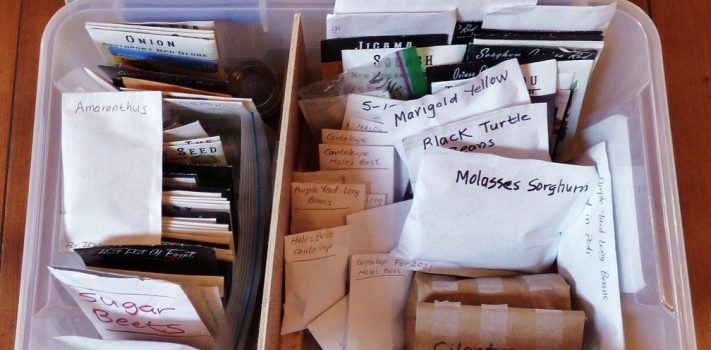









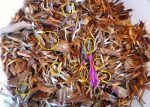
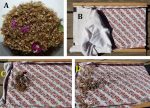
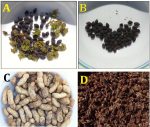

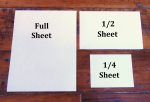




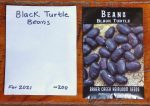
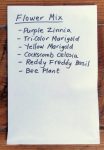
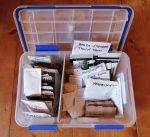
Enjoyed the article; learned a whole bunch! Thanks.
Fantastic information and fun to read. Thanks for sharing!
Excellent 3 part series I learned a lot thank you st.funogas
An enjoyable way to plant field seed mixtures. Seed Bombs. Mix wet clay soil and compost to find your ratio to make a formable ball. Mix in seeds of choice. Let dry. Later you can cast them into areas you want those seeds to prosper.
Yes you can hand sow seeds if you like and it works pretty well IF the soil is prepared for them and moisture is available. Seed bombs have the seeds already planted and fertilized ready for a bit of rain. Helps them overcome the competition of existing plants already in the area.
Remember to think about what your planting. Kudzu for example was imported from China as a Government experiment to control erosion in the South. While a very useful plant with high feed values for animals and people it’s the plant that ATE the South as it overwhelms trees and unused railroads.
In China they control it by eating it. It cooks up well as greens, tender roots also are used in stir fries. Poultry will eat it IF chopped up as the large leaves are not easy for them to consume. Dried a valued hay for milk animals. Larger roots-vines chopped up for fermented silage.
Comfrey is a very useful plant much like Kudzu. Very hardy and a soil improver. Good for animal feed. But it can be difficult to remove once planted. Sterile Russian Block 14 Comfrey makes NO Seeds and must be dug up and roots split and replanted to reproduce. Thus not invasive but takes time and work to become enough for animal feed.
Autumn Olive is also a example of a good plant that will become invasive.
St. Funogas (interesting name, wish I knew the back story, maybe over some coffee) do you do companion planting and Guild Plantings? I find them pretty useful in reducing the plant pests INCLUDING Deer.
Now if I could find a non-toxic way to get rid of voles…
Hey Michael, I like your seed bomb idea. The biggest advantage I can see to that is it should keep all kinds of critters from eating the seeds before they germinate. Good way to test out that trebuchet I’ve been fiddling with. 🙂
As far as companion plantings, I’ve only tried it once, with radishes which are supposed to help with squash bug control, but I didn’t see any noticeable difference.
St. try again friend. I find Garlic my most potent companion plant.
In fact an very effective bug spray is a little soapy water blending in some garlic cloves or over gage garlic scapes. As you can soap with lye water and rancid fats (edible too but fat is hard to create around the homestead) I find it interesting when Tractor Supply is a smoking ruin.
Borage is my go to for squash protection, plus it tastes good.
Trebuchet ROTFLMAO. I actually built an Ballista and Onager as I’ve been fascinated by Roman Technology. Roman Military Medicine was surprisingly good ditch medicine today.
Might have been why I got into the Medical Field 🙂
Hey Michael, I’ll give the garlic a try.
I’ll check out some onager and ballista plans, they look pretty interesting on Wikipedia. Maybe you should write an article so those folks who turn in their weapons during the Harris administration will have something to fall back on.
When I visited Warwick Castle in England, I got to be one of the gerbils in the wheel raising the arm up. That was totally cool. 🙂 You could shoot some pretty big seed bombs with that baby.
St. Funogas, you’re only disarmed when you choose to be zip-tied.
A sock and a rock works well. If we were not chatting on an open internet I could discuss many others I’ve experienced in 20+ years US Army and at various Re-enactments. It’s not always the weapon but the Attitude of the Person that matters.
I try to remember Braveheart “All men Die, Not every Man truly Lives”.
I’ve had damage from vole activity as well, but its never been too bad for me because we have 2 good mouser outdoor cats. They have also decimated the local baby rabbit population. I have not had to fence the garden since we got these 2 cats. They have more than earner their keep. This may not be a solution for everyone since some areas your cats will just be lunch for foxes and coyotes. Maybe a pet bobcat would be a better bet for some of the more rural folks.
St Funogas thanks for a great series. It was timely for me as I am working on picking up heirloom varieties to test out for next year and start saving my own seeds.
Give your outdoor cats a safe place to sleep, and they will be less likely to be prey themselves. I use an old garage with a small opening in a door panel. Dry, and the opening is too small for foxes and raccoons to get in.
Sheds and outbuildings work well, as long as the opening to the area where they are is small. Or you can convert a doghouse into a cathouse by reducing the opening size.
If you live in a high snow area, you may want an upper and a lower door, so they can get in and out in the winter.
Cats sleep about 20 hours a day, so a safe nest should keep them alive a long time.
Interesting and awesome. Varying our techniques to yours will benefit our seed saving for years to come. Bless you, LuvYerBro.
Thank you, Saint.
St. Funogus
I really enjoyed reading this article and learned several new things, well more than several.
I have been looking into crops I can feed my chickens to reduce or eliminate purchased feed. You mentioned the protein value of some seeds, like squash that you could eat, but you can also feed them to chickens. I was really interested in sorghum as a feed it is high in protein but it has (like many grains) anti nutrients like phytates and high tannins that actually reduces growth rate (see Feedipedia https://www.feedipedia.org/node/224 for details) in poultry. But there are many other things that can be grown to not only feed ourselves but also livestock we may have. Seed saving is so important for food security. Thank you for sharing some of your knowledge on how to do this.
Hey CD, the link you provided is excellent, thanks for posting that. I didn’t realize that sorghum millet was the fifth most produced grain crop on the planet.
On feeding squash to chickens, I wonder if there are any varieties which produce a high amount of seeds? The rest of the squash/pumpkin makes good feed as well, just not as high in protein. One of my sons sent me a photo last week of his pickup bed full of post-Halloween pumpkins he got free from some of the local markets. He feeds them to his goats, chickens and turkeys. That’s a good source to keep in mind for the future.
St while you could feed squash seeds to your chickens, it’s more profitable to use what old “Scientific” farmers did before Purina. 50% corn and 50% field peas (southerner’s might call the cowpeas) dried and coarsely crushed.
My neighbors chickens love post Halloween Pumpkins 🙂
Michael
You are right! Corn and peas are very nutritious combination. In fact peas can be dried and fed without any other processes unlike beans, soy beans etc. I had good success this year with Colossus 80 field pea (crowder pea, southern pea, cowpea) I saved all the seed so I can plant next summer. Hopefully I can get a good enough yield to feed some to my chickens. Corn is cheap to buy but I like to get non-gmo and that isn’t available nearby. I wish seed companies would have an nutritional analysis so I could use the Pearson’s Square* to figure out a balanced homemade feed.
I think I will send some of my Ohio Blue Clarage corn seed for an analysis with GA Extension Service. It grows exceptional well for me.
Tools I used to balance sheep feed and now chickens:
*https://www.sheepandgoat.com/spreadsheets
*http://www.homesteadapps.com/app/free/feedcalc/pearsonsquare.php
Can anyone tell me the easiest way to coarsely crush corn and cow peas
without needing special equipment? Thanks!
KB a cheap iron hand grain grinder with the plates set loosely. A little fiddling around will get the results you want.
Don’t bother with stone grinders for this. They rub, not crack the dried peas and corn.
St. Funogus
Here is a squash I am planning on trying just for the seeds produced. https://www.sandhillpreservation.com/copy-of-winter-squash-banana-types
it’s the Campeche one listed.
I really like Sandhill Preservation I spend hours reading the descriptions. LOL I am a seed nerd. Also I like to collect things. I love my seed collection. The other day I was organizing (I spend a lot of time doing that) my seeds and trying to figure what I needed to order as soon as the 2021 catalogs became available and my mom was helping. She said, you have a lot of seeds. You won’t need to buy any. Ha! Ha! Nope! I have already made a list ( a long list) of seeds I’m going to buy.
I didn’t have much time to devote to my garden this year with our move, but one squash I grew was amazing! It took off with the chickens even scratching up my new garden area. Try it if you can https://www.southernexposure.com/products/south-anna-butternut-winter-squash/
We have several orchards that sell pumpkins in the fall but I haven’t checked to see if they discount them when past their prime. They do sell apples that way we would get the “seconds” for ourselves and our pigs.
It would be nice if SB readers could trade info on our favorite varieties of what we grow – what is pest resistant, disease resistant, has good yields, stores well, etc and what general area of the country it did well in.
Loved the article!
Hi CD, looks like you need help with your seed saving. We meet at 7 PM on Tuesdays at the fire station. “Hi, my name is CD. I am a seed saver.” Everyone in chorus, “Hi CD.”
The Sand Hill site looks like it’s worth checking out and I guess that Campeche answers the question about seedier varieties. The disease-resistant butternut also looks good. Butternuts are my fave but I’ll also be growing the delicatas several have mentioned. Let me know when someone comes up with a squash bug resistant variety. Not even chickens will eat squash bugs.
Tucson, AZ finally had a gun show. Over 300 people were waiting to go in about 15 minutes of the show opening. Everyone was looking for ammunition and guns. The election and the possibility of an Arizona steal was a prominent topic of conversation.
Stop the steal by taking a picture of your ballot. The Georgia State run off election could be kept honest by all the voters taking a picture of their ballots. If Biden gets elected many guns will tend to go underground. Ammunition was available at the show but little was sold due to the high prices.
Great article! Last year I saved some Kentucky Wonder pole bean seeds and okra seeds from pods that I missed picking, and they got too big so I let them go to seed. This year I had lots of basil that went to seed, so I saved some of that.
Earlier this year I had some radishes and beets that went to seed but I procrastinated; by the time I got around to picking them they were all gone. Not sure what happened, maybe the mice, gophers, or other critters got them.
A couple years ago I had to plant a row of okra 3 times because the gophers were digging them up after I planted them and eating them.
Hey Strelnikov, you bring up an excellent point that if we procrastinate seed collecting often times the seeds will disappear, either by falling to the ground or getting eaten.
I had to re-read your last line, it sounded like you were eating the gophers! Perhaps that would be a good way to retrieve the protein they stole when they ate your okra. After the SHTF, it would probably be a good idea. 🙂
“ As all experienced seed savers know, once you start saving seeds, you’ll eventually end up with way too many, from both this year and the ones you’ve been hanging on to since the Reagan administration”
ROFLOL, who me? Noooooo. : )
Great article!
Loved these articles! I have the books and have done a little seed saving over the years, but want to get more serious about it. You provided so much wonderful information and your personal experience makes it that much more informative for us. I love your humor, too!!! I never trust someone who doesn’t have a sense of humor.
Can you say 1st place?… Feedng yourself for free year after year is valuable information.
This was such a USEFUL series of articles! I had to chuckle at your recycled paper envelopes — we think alike.